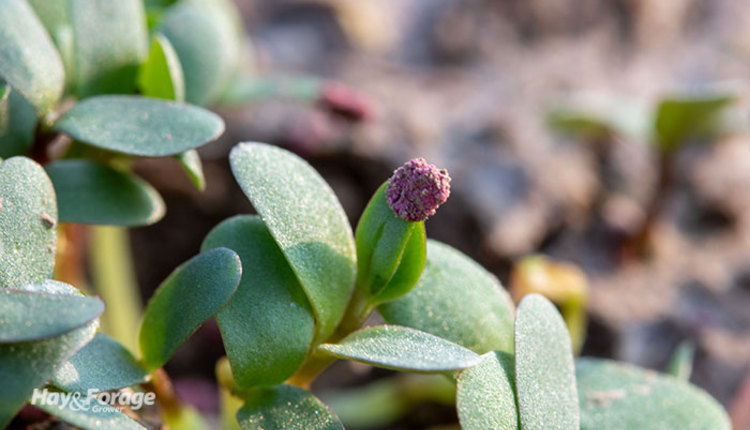Capitalize on alfalfa seed coatings |
| By Amber Friedrichsen, Associate Editor |
|
|
 In addition to brightening up the inside of a seed bag, colorful seed coatings can serve several functions for alfalfa establishment. Craig Schaeffer, an extension forage agronomist with the University of Minnesota, notes the overall goals of seed coatings are to improve germination and seedling survival. The added weight from coatings also enhances seed flowability during planting, which is especially useful for an even distribution of small alfalfa seeds. While standard alfalfa seed coatings contain rhizobia bacteria to promote nitrogen fixation and fungicide treatment to protect seedlings, Schaeffer says many seed companies market specialized components as well. These can include growth promoters, micronutrients, mycorrhizae, insecticides, and hydroscopic materials that attract soil moisture. Other constituents of coatings are binding polymers, minerals, and colorants. Given the benefits, Schaeffer does not recommend planting alfalfa seed that is not coated. However, seed coatings effectively reduce the amount of pure seed in a bag, and there is little research to know how much seeding rates need to be adjusted for this, if at all. More coating, less seed Schaeffer points out that a 34% seed coating is widely used for alfalfa seed. For reference, a variety with 34% seed coating and 95% total germination would have 62.7% pure live seed. In a 50-pound bag, that’s 31.5 pounds. Seeding alfalfa at 12 to 15 pounds of seed per acre is generally recommended in the Midwest to achieve adequate plant populations the following spring, considering losses due to disease and competition. At the latter rate, there would be 17 fewer seeds per square foot of alfalfa with 34% seed coating compared to alfalfa with 10% seed coating. “Is the risk mitigation potential of 34% seed coating enough to overcome the differences in pure live seed content?” Schaeffer questions. The short answer is yes. It’s all relative Seed coatings improve germination and seedling vigor, thus reducing seedling loss over the establishment year. In theory, this should make up for the lower pure live seeding rate of alfalfa with 34% seed coating. Recent research shows alfalfa yields rarely improve with seeding rates above 10 pounds of pure live seed per acre, which is about 50 seeds per square foot. According to the example above, maintaining the recommended seeding rate of 15 pounds per acre with alfalfa that has 34% seed coating and 95% germination would result in approximately 48 seeds per square foot. With that said, Schaeffer encourages producers to conduct their own field trials to understand how seed coating affects alfalfa establishment on their farms. Although seed coating is an asset for alfalfa production, trial and error may be necessary to understand how to take full advantage of it. “The efficacy of seed coatings in improving alfalfa stands will be dependent on the local environment, soil, and seeding technology,” Schaeffer asserts. “In the absence of independent research trials, growers should determine if adjustments in seeding rates are needed with seed coatings.” |
